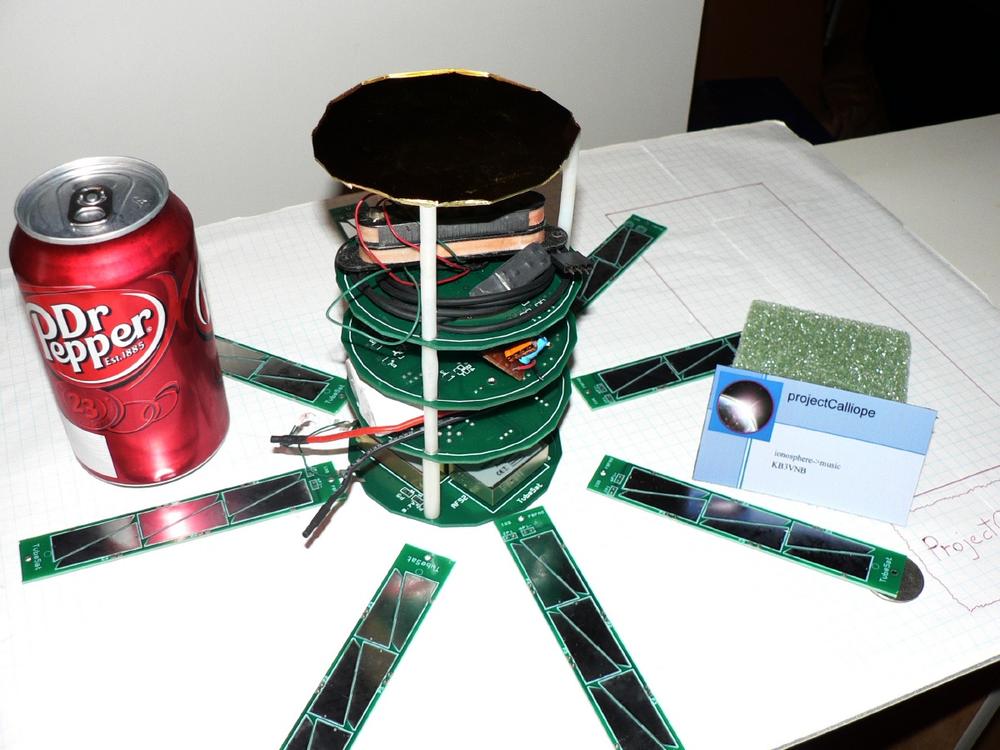Form Factor
In this book, I present examples using both the CubeSat and the TubeSat standards. If you have to switch providers and are going from CubeSat to CubeSat or from TubeSat to TubeSat, obviously no form factor change is needed. However, what if you have to shift from the proprietary TubeSat design to a CubeSat specification?
Geometrically, a TubeSat is a cylinder 9cm in diameter and 12.7cm long (see Figure 6-2). A standard 1U CubeSat is 10cm × 10cm × 10cm. Therefore, a TubeSat, if trimmed, can fit neatly into a CubeSat. The main body of the TubeSat is easy to shorten simply by decreasing the size of the payload bay. I feel the bay is generous already—you can fit an entire guitar pickup in there. You can also tweak the spacers for the other section to push them to a closer tolerance.

Figure 6-2. Size and weight build model for a tubesat-type 1kg limit picosatellite
The TubeSat solar panels are slightly more difficult to trim; there is perhaps 1.7cm of excess PCB you can safely cut without needing to refabricate. That still leaves a TubeSat solar panel at 11cm. To resolve this, it is simplest to create a new solar panel PCB that fits only 2 × 2 rather than 2 × 3 solar cells, and fabricate enough boards to fit all the cells. Since the surface area of the 10 × 10 × 10cm CubeSat is larger than the 10cm tube, there is plenty of extra room to place the additional panels.
In terms of ...
Get DIY Satellite Platforms now with the O’Reilly learning platform.
O’Reilly members experience books, live events, courses curated by job role, and more from O’Reilly and nearly 200 top publishers.

